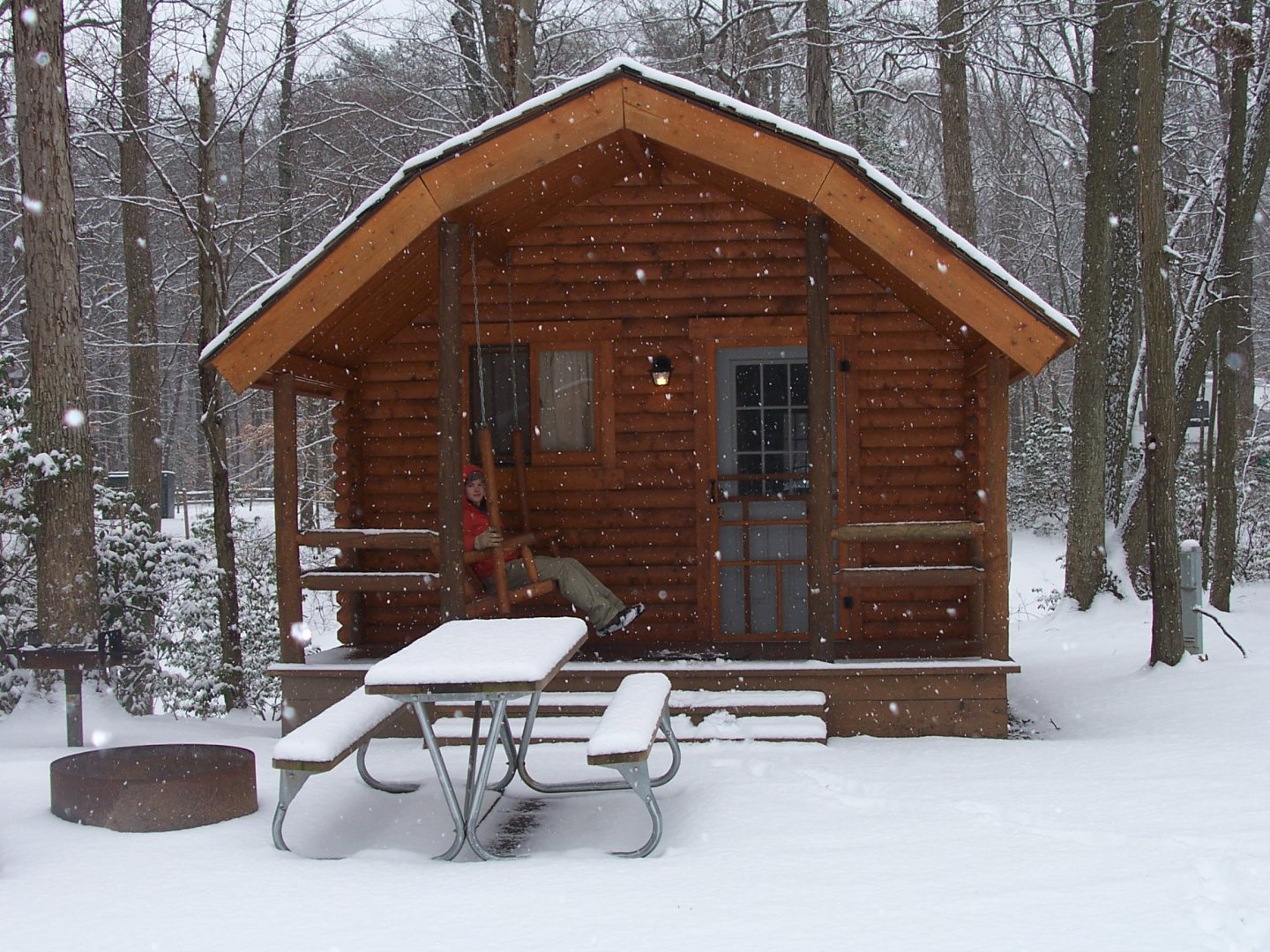Carlyle House Historic Park
History
A Fine Beginning
When half-acre lots for the new city of Alexandria were auctioned in 1749, British merchant John Carlyle purchased lots 41 and 42, two of the most expensive lots because they were centrally-located between the Potomac River and Market Square. This location provided easy access to customer and to trade routes for Carlyle's merchant business. Carlyle, also a founder of Alexandria, began construction of his Georgian stone mansion in 1751. He and his wife Sarah Fairfax Carlyle moved into their completed house on August 1, 1753. That same night, she gave birth to their first son, prompting John to write to his brother George in England that it was “a fine beginning.”
The Georgian-style mansion provided public spaces for entertaining and private areas for family and servant use. The house quickly became a center of social and political life in early Alexandria. Carlyle's magnificent stone house dominated Alexandria’s 18th-century landscape and confirmed Carlyle’s status as a gentleman and entrepreneur. Today, Carlyle House is one of the nation’s finest examples of Georgian residential architecture.
About John Carlyle
John Carlyle was born in 1720, the second son of a landed British family with strong Scottish ties. As a young man, he apprenticed with an English merchant firm and by 1741 arrived in Virginia as a factor, or representative, for William Hicks. John Carlyle came to Virginia hopeful of making “a fortune sufficient...to live independent.” Carlyle’s ensuing financial success was matched by his good fortune in his 1747 marriage to Sarah Fairfax, a young lady from one of the most influential families in colonial Virginia. Carlyle’s extensive business activities included import and export trade to England and the West Indies, retail trade in Alexandria, an iron foundry in the Shenandoah, and a blacksmithing operation.
Through his growing business and social ties, Carlyle emerged as a leading political figure in northern Virginia and counted such luminaries as George Washington among his friends. Carlyle owned thousands of acres of land throughout Virginia, including three working plantations. He served as one of the original Trustees of Alexandria, the commissary for the Virginia militia during the French and Indian War and the Revolutionary War, and a justice of the peace for Fairfax County. His wealth, social and business activities, and political service established him as a member of the colonial Virginia gentry. As a town founder and civic leader, John Carlyle’s story captures the entrepreneurial spirit of early America.
Fairfaxes and Belvoir
John Carlyle married Sarah Fairfax of Belvoir on December 31, 1747. Sarah’s father, William Fairfax, was the cousin and land agent to Thomas, sixth Lord Fairfax, Baron of Cameron. Lord Fairfax owned the Northern Neck Grant, which encompassed all of the land between the Rappahannock and Potomac Rivers, approximately 5,000,000 acres. The Fairfaxes were therefore one of the wealthiest families in Virginia.
After William Fairfax’s death in 1757, his son and Sarah’s brother, George William Fairfax, inherited Belvoir. George William and his wife Sally Cary Fairfax continued to furnish and entertain in the grand manner inaugurated by his father. John Carlyle, his family, and close neighbors and relatives like George Washington visited Belvoir often. In 1773 George William and Sally Fairfax left Virginia for England. The house was rented and the elegant furnishings sold at auction, facilitated by John Carlyle.
In 1783 the house at Belvoir burned to the ground. George Washington wrote to George William Fairfax that “Belvoir is no more!...ruins indeed they are...When I viewed them, when I considered that the happiest moments of my life had been spent there...I was obliged to fly from them.”
Braddock
On August 15, 1755, John Carlyle wrote to his brother George that “there was the Grandest Congress held at my home ever known on the Continent.” This legendary conference of five colonial governors was called together by General Edward Braddock, the Commander-in-Chief of His Majesty’s Forces in North America, who had been sent to the colonies to oversee the escalating French and Indian War.
Upon his arrival in Alexandria with 1200 British troops, Braddock selected Carlyle House as his headquarters. Together with his aides, he moved into the home for three weeks. John Carlyle did not seem to enjoy the experience. He wrote to his brother that General Braddock was a man “too fond of his passions, women and wine...” and that while in his house the general had “abused his house and furnishings...”
Throughout this period, Great Britain and France fought over land claims in the trans-Allegheny region. Braddock convened the colonial governors to discuss the financing of an upcoming campaign against the French. The ensuing debate at this conference over the financing of the campaign was one of the earliest examples of the friction between Britain and her American colonies which would eventually result in the American Revolution. General Braddock left Alexandria, never to return. He died in battle in Pennsylvania, but Alexandrians never forgot his visit. For many years after both Braddock and Carlyle had died, the house was known as the Braddock House.
Family Life
Sarah Carlyle gave birth to seven children. Unfortunately, five of these children died young. Sarah Fairfax Carlyle, their fifth child, was the first child to survive early childhood. The family Bible lists a progression of births and quick deaths. John wrote to his brother George of his beloved wife’s depression and physical ailments and his own disappointment. He wrote “The Loss hangs Very heavy On My Wife & makes her Illness much worse...”
Sadly, Sarah died on January 22, 1761 after giving birth to their seventh child, a daughter named Ann.
Nine months later, on October 22, John married Sybil West, the daughter of fellow town Trustee, Hugh West. In the ten years of their marriage, Sybil and John had four children. Only one of these children, George William, survived. John Carlyle did not remarry after Sybil’s death in 1769. In 1775, Carlyle’s daughter Ann married Henry Whiting, and died in childbirth in 1778. John Carlyle died in 1780, leaving Carlyle House to his fourteen-year-old son, George William. However, George William died in battle one year after his father. Of the eleven Carlyle children, only Sarah lived to old age. She married William Herbert in 1777 and their son, John Carlyle Herbert, inherited Carlyle House after Sarah’s half-brother’s death in 1781. Carlyle House remained in the family until Sarah Herbert’s 1827 death.
The Carlyle “Famely” and Slavery at Carlyle House
Did John Carlyle consider the African Americans that he owned to be a part of his “family?” Carlyle recorded in December of 1769 that he “lost Ten slaves Young and Old and have had a Very Sickley famely. I thank God myself & my Little folks have been as Well as I could Expect, for which I am thankfull, for Six month together to have Six or eight at a Time Influxes, the hoopin Cough & is very disagreeable & I had one valuable slave drowned.” Carlyle’s writings indicate a paternalistic attitude towards his slaves which was typical for the time. There are no clear-cut records today of how John Carlyle felt about African Americans and slavery, although he was active in importing, buying, selling and owning slaves.
Despite a lack of personal information, it is critical to understand the role of the slaves in the household. If you had visited the Carlyle House in 1770, most of the faces you saw were black, not white. The two story stone house was not only John Carlyle’s dwelling, it was the center of an entire complex of buildings. Inside and outside the buildings, enslaved African Americans moved about their daily activities, keeping the Carlyles fed and living in comfort and ensuring that John Carlyle’s businesses ran smoothly. Skilled in domestic work and crafts, these individuals were owned by one of the largest slaveholders in northern Virginia.
John Carlyle employed slave labor in all of his landholding and business ventures. Slaves toiled in the fields of his three plantations. Skilled craftsmen worked in the blacksmith shop. Enslaved carpenters, masons, and joiners labored in his undertaking (construction) enterprises, including building Carlyle House itself. In Carlyle’s merchant business, slaves served in numerous capacities.
Moses, Nanny, Jerry, Joe, Cate, Sibreia, Cook, Charles, Penny...John Carlyle’s probate inventory names these nine slaves on the site in 1780. This inventory lists all personal property of the deceased, including furniture, livestock, domestic items, and slaves. Carlyle’s papers, as well as letters, diaries, and account books of other Virginians, plus runaway slave advertisements and sale notices shed some light on slaves in Virginia. Although written from slaveholders’ points of view and therefore biased, these sources help humanize the Carlyle inventory.
The Civil War
Following John Carlyle’s death, his heirs sold off bits and pieces of his property over time. Beginning in 1847, local furniture manufacturer James Green began reassembling the original Carlyle acre of land. He managed to acquire the three-quarters of an acre that remains today. He bought Carlyle House itself, then known as Mansion House, in 1848. On the property at that time was an 1806 building that had been a bank. Green converted this building into the Mansion House Hotel, one of the finest hotels on the East Coast. He expanded the hotel in the mid-1850s, completely hiding the west façade of Carlyle House from the street.
Union troops occupied the city of Alexandria in May of 1861 and billeted in Green’s hotel. In November, the Union Army evicted Green and his family from both the hotel and their home, Carlyle House. The Union converted the hotel into a hospital for Union soldiers, and used the mansion as quarters for doctors and high-ranking officers. One Alexandria citizen described Green’s situation in the following way: “one of the greatest sufferers by the present occupation of Alexandria by the Hessians is Mr. James Green...Just after the Battle of Bull Run they occupied his Hotel (the largest and finest in the City) and after abusing it most shamefully left the premises in such disorder, as to require great repairs and months of cleansing, and he had scarcely reopened it when they demanded its evacuation to which he was compelled to accede, and voluntarily offered him a large rent, but was told, upon the first months rent coming due, that his rent money was ready whenever he would take the oath of allegiance to the US. Of course, the rent remains unpaid.” (1862 diary of Henry Wittington, Alexandria).
Twentieth Century Restoration
After Carlyle’s death in 1780, the site went through many changes. Green’s hotel became a hospital during the Civil War and an apartment building in the early twentieth century. The mansion itself became a museum during World War I. By the mid-twentieth century, the Carlyle House and grounds were in a state of great disrepair. NOVA Parks acquired the house and apartments in 1970, thus beginning a six year project of research and restoration. NOVA Parks fully restored the house and opened it to the public in 1976 as part of the nationwide Bicentennial celebration. Operated according to the highest professional standards, Carlyle House is accredited by the American Alliance of Museums, a singular distinction. Carlyle House is also listed on the National Register of Historic Places.
Daily tours of the house, programs for schoolchildren, special events, exhibits, and lectures explore the life and times of John Carlyle in pre-Revolutionary Alexandria.
Historical Documents


